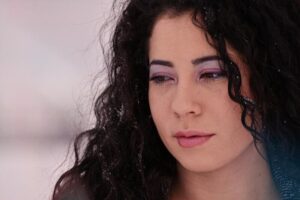Myopia, also known as nearsightedness, is an eye condition where the person has difficulty seeing far. The distant objects become unclear as the light falls in front of the retina instead of on it. This happens when the eye grows much longer, an overly curved cornea or a thicker eye lens.
Nearsightedness usually catches you because of your prolonged exposure to screen time on gadgets or reading in the dark.
This standard refractive error, engulfing about a quarter of the world’s population and prominently prevalent in East Asia, seems to contract primarily the young children, teens, and even adults. Most of the time, it affects the young and then gradually makes its way to adulthood. Myopia can be genetic and also be related to the bonds of ethnicity.

Table of Contents
Can Myopia Be Cured?
Stating the facts, a permanent cure for nearsightedness does not exist yet. However, doctors employ medicines and use some other forms of treatment plans to slow the progress of myopia at least.
Some of the forms of treatments and daily habits to reduce myopia progression are:-
Atropine Eye Drops
These have been incorporated in the treatment of myopia for ages now by doctors. It is of utmost acceptable short-term treatment because its effectiveness hinders the progression, perhaps after the first year.
However, the child has to wear eyeglasses or contact lenses. The added disadvantages of using these drops are light sensitivity and unclear vision for a little while.
Multifocal Glasses & Contact Lenses
Multifocal contacts are specially designed lenses equipped with several abilities being allocated to different zones on the lenses. It has been predominantly used to correct presbyopia, a condition similar to and even worse than myopia that generally develops at senile decay.
However, the usage has seen effective results while correcting both myopia and hypermetropia in children and teens. The multifocal glasses and lenses are also available; some of their results have been sort of satisfactory.
Orthokeratology
‘Ortho-K,’ or orthokeratology, is an endeavor of reducing myopia progression by prescribing contact lenses to the child that he has to wear while sleeping so that during the day, wearing contact lenses or even glasses can be skipped.
Surprisingly, this method has significant proven results of reducing myopia progression. It is also reasoned that the children who have been under treatment via this method hold lower probabilities of developing severe myopia as adults than those who do not.
Reduce screen time
Cut down on the screen time by reducing the contact with the handheld devices as much as possible. Vision gets affected because of the prolonged unprotected exposure to the radiation coming from those devices. Take appropriate short breaks while using the devices and gaming consoles.
Also, keep the background of the screen supple and light to avoid eye strains. While using devices, settle the child in front of a window or balcony to look while taking a break.
Physical Activities
Encourage outdoor games and sports for children. According to All About Vision, research reveals that kids who are inclined more towards outdoor games are less likely to develop myopia than those who do not. While playing, eyeglasses do not always have to be donned. They should only be worn when the child is unable to see clearly.
Eye Care
Press a warm compress on the eye daily to avoid getting it dry by keeping the tear glands lubricated. Also, you can opt for methods like massaging tactics on foot by locating the eye points.
Do not touch the eyes with dirty hands as there will be high chances of infection because of bacteria and microbes. Along with physical exercise, ensure a balanced diet to replenish the deficiency that triggers eye disorders.
If you want to check the risk factor of myopia in children, then you can use risk assessing software. It provides a test that is designed to receive answers and contemplate them. The report shared will state if your kid is at the risk of being affected by myopia.
Be precisely aware if your child complains of fatigue because of stress and headaches. Ignoring the condition of myopia can later develop into grave problems like cataracts that shall require surgery.




